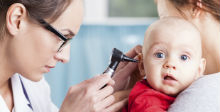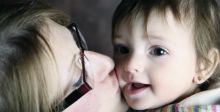Internal mini form
Contact Us Today
When a child or adult has Cerebral Palsy, there are numerous areas of his or her overall health that need to be monitored. One of the most important is a child’s respiratory health. Respiratory health depends on the ability to breathe properly, cough correctly, and manage respiratory infections promptly.
Children with Cerebral Palsy, especially if they have oral motor dysfunction, are vulnerable to respiratory complications due to aspiration, pneumonia, bronchiolitis, and respiratory distress syndrome. Many of these medical conditions can be life-threatening if they are not managed properly.
What is respiratory health?
Typically, a child with Cerebral Palsy has a lower activity level than most children. When a child is unable to exercise in a manner that causes deep breathing, air passages are more likely to become infected and the muscles used for breathing aren’t fully exercised.
If children experience trouble controlling muscle function and have feeding or swallowing difficulties, they may also be unable to cough up material left in the passageways, which can contribute to infection.
If a child has a structural deformity, such as curvature of the spine, muscle tone and gravity may contribute to chest wall deformity, which, in turn, can lead to restricted lung function and the potential for unequal lung expansion. When breathing is labored, it predisposes a child to respiratory dysfunction and, in some extreme cases, failure.
Children with Cerebral Palsy are often born preterm. Premature babies frequently arrive with serious lung conditions, like bronchopulmonary dysplasia and respiratory distress syndrome. Lack of oxygen during pregnancy or during birth can cause Cerebral Palsy.
Malnourished or undernourished children are subject to atrophy and weakness that can also reduce lung function and lead to a weakened resistance to infection. Those with frequent aspiration are more prone to develop pneumonia, as well, which is a serious condition for young children.
Respiratory health must be monitored
Parents are urged to monitor their child’s respiratory health. If the child experiences recurrent chest infections, pneumonia, frequent aspiration, or persistent coughs, a respiratory specialist is warranted. Upon evaluation they may even refer the child to a gastroenterologist, a dietician or a speech and language therapist for additional assessment.
If the child is unable to control and coordinate facial muscles – properly sealing lips around a mouthpiece, for example – some tests required to assess respiratory conditions, as well as some therapy options, may be recommended.
Respiratory functioning is a factor in life expectancy
Respiratory difficulties can lead to serious health risks including aspiration, pneumonia and respiratory failure. Maintaining optimal respiratory health is a key component to life expectancy in those with Cerebral Palsy.
Respiratory functioning, as well as swallowing and chewing difficulties, is a factor in reduced life expectancy for children with Cerebral Palsy. Respiratory dysfunction can lead to malnutrition. Respiratory distress makes it difficult for the body to function and can lead to life-threatening heart conditions.
Difficulty in swallowing and feeding can lead to the inhalation of food particles. This can cause infection in the lungs or pneumonia, which are also of concern. Severity and frequency of respiratory infection is a significant life expectancy factor.
For more information, Life Expectancy of Cerebral Palsy
Respiratory interventions promote healthy breathing
Lung function, sleep apnea, breathing functions and coughing mechanisms can be assessed. Nutritional assessments can lead to recommendations for feeding interventions that can improve respiratory function. Exercising the lungs to clear phlegm is just one type of activity with a positive result in this area.
Respiratory intervention may include a number of potential options; respiratory supports, inhalers, feeding instructions, speech therapy, dietary changes, nutrition counseling, prophylactic antibiotics, and options that involve nasogastic intubation in the short-term, or gastrostomy for long-term intervention.
The goal of respiratory intervention is to increase quality of life, promote healthier breathing options, and reduce risk of (or prevent) life-threatening health conditions.
Respiratory conditions commonly associated with Cerebral Palsy which requires identification, treatment and prevention, include:
- Aspiration
- Aspiration pneumonia
- Asthma
- Breathing problems
- Bronchiolitis
- Bronchitis
- Bronchopulmonary dysplasia
- Chronic lung disease
- Gastro-esophageal reflux (GER)
- Gastroesophageal reflux disease (GERD)
- Respiratory complications
- Respiratory distress syndrome (RDS)

Associative conditions
Cerebral Palsy affects muscle tone, gross and fine motor functions, balance, coordination, and posture. These conditions are mainly orthopedic in nature and are considered primary conditions of Cerebral Palsy. There are associative conditions, like seizures and intellectual impairment that are common in individuals with Cerebral Palsy. And, there are co-mitigating factors that co-exist with Cerebral Palsy, but are unrelated to it. Understanding conditions commonly associated with Cerebral Palsy will enhance your ability to manage your child’s unique health concerns.
Associative Conditions
Common associative conditions
Click on a condition listed below to learn more.








